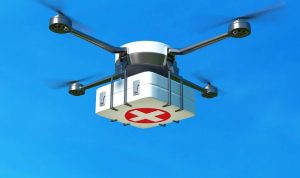Drones haven't had much to offer the medical or healthcare space, but the Canadian Agency for Drugs and Technologies in Health is offering a fresh perspective. Access to healthcare in remote and rural areas is limited and often restricted by long distances or scarcity in availability. However, the use of medical drones with teleported robotic ultrasound system sets to take aim at this issue.
Why is this so important to Canada? In much of rural Renfrew County in Ontario, delivering and getting life-saving equipment, devices and medicine to citizens living in dense terrain is near impossible— especially in times of emergencies. This has forced healthcare providers to look to alternative solutions, namely technology.
Paramedics in Renfrew County just outside Ottawa have been testing multi-rotor drones to deliver automated external defibrillators (AEDs) to rural residents since 2016. More recently, in 2019 Swedish multinational networking and telecommunications company Ericsson was part of an innovative trial in Renfrew that virtually raced EMS ambulances on the ground against drones equipped with AEDs. InDro Robotics supplied the drones or unmanned aerial vehicles (UAV), Cradlepoint provided its NetCloud Service with Ericsson providing the crucial 4G LTE Advanced connectivity.
During the trial, they simulated emergency calls and each team was tasked with delivering defibrillators to researchers from the University of Toronto and Ottawa Hospital in 20 remote spots. The trial was a success, with the drones arriving seven to fifteen minutes earlier than paramedics in emergency vehicles.
4G LTE was the star of the trial, as previous studies relied on non-cellular technology. This means 5G has the potential to unlock even better results and opportunities for drone-serviced healthcare.
And this isn't the first time drone trials have been executed within the realm of healthcare. Moose Cree First Nation in northern Ontario has been testing drone delivery of key supplies over the vast stretches of water - up to 1.5 miles wide - which separates the island from the mainland. Similarly, drones have been used in Rwanda since 2011 to deliver blood supplies in mountainous terrain. In Madagascar and Malawi, drones are currently being tested and used to provide patient samples in labs.
While Canada is the current focus, other applications for the future of drones include military medical evacuation, locating drowning victims, remote detection of vital signs, and even delivery of portable DNA sequencing equipment.























